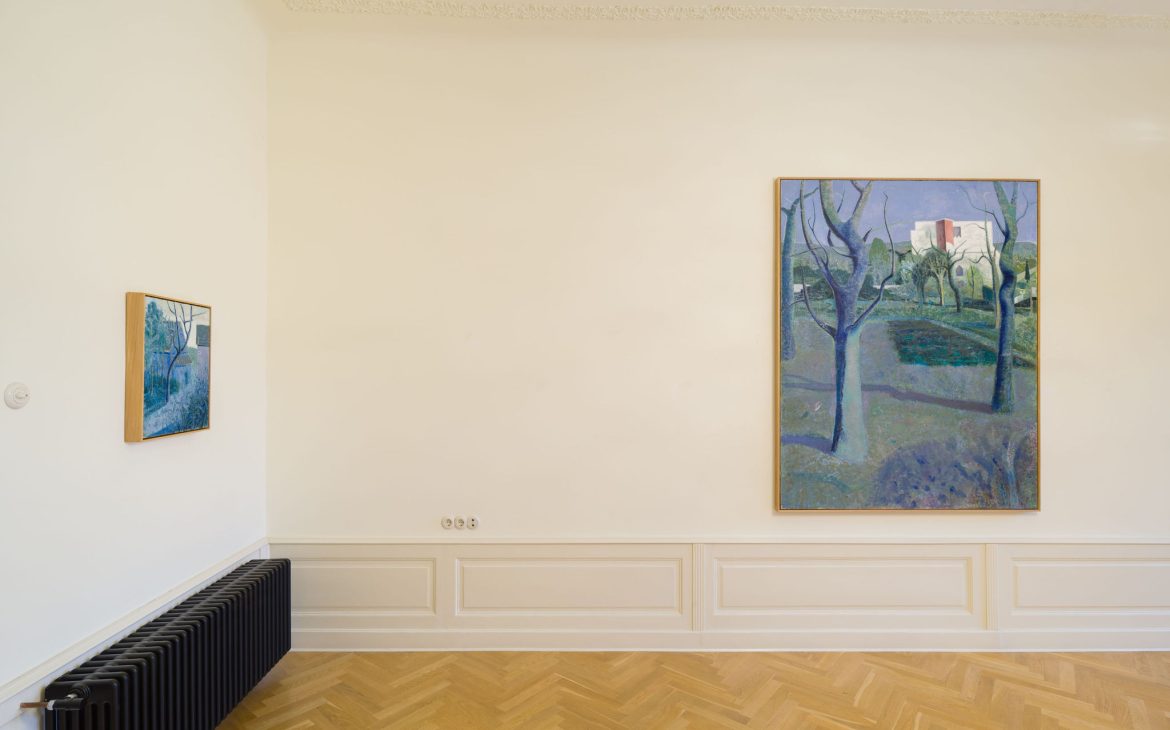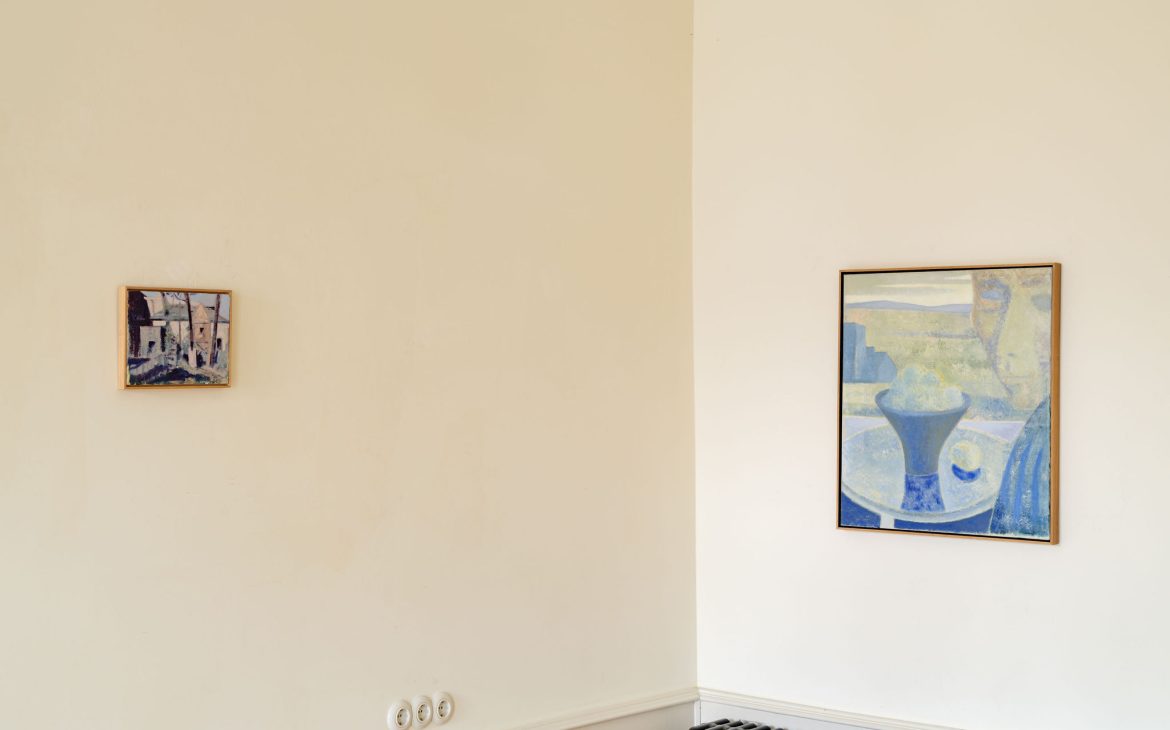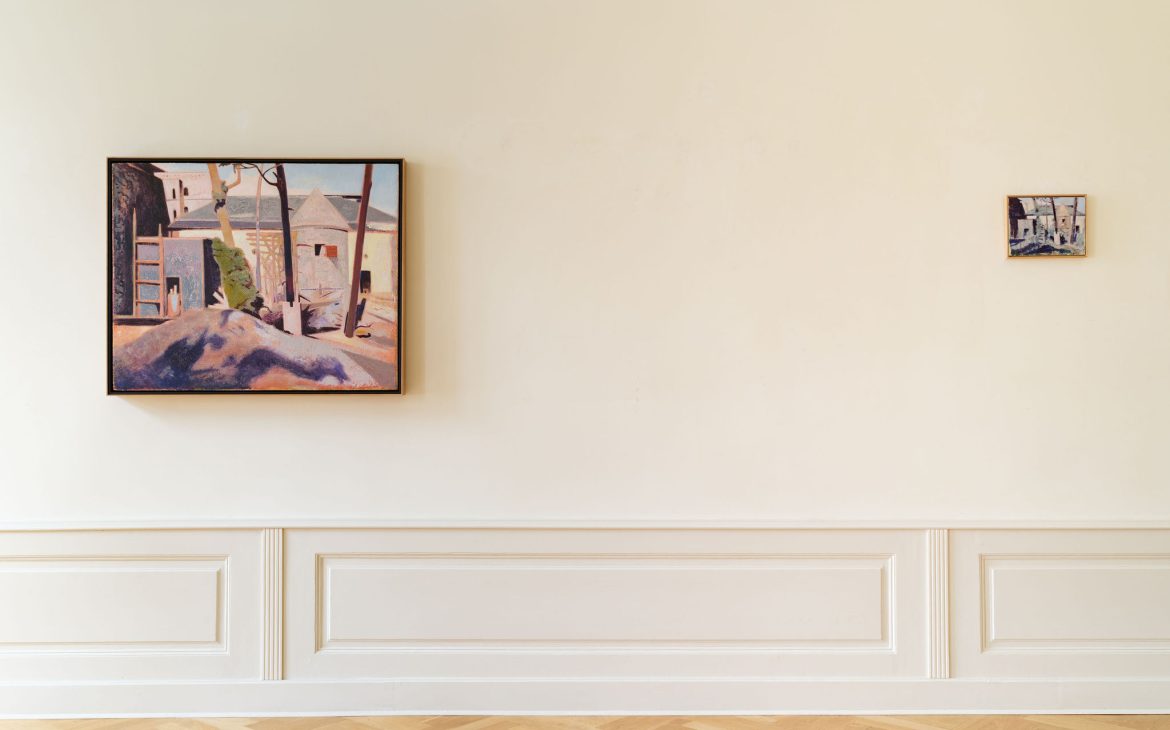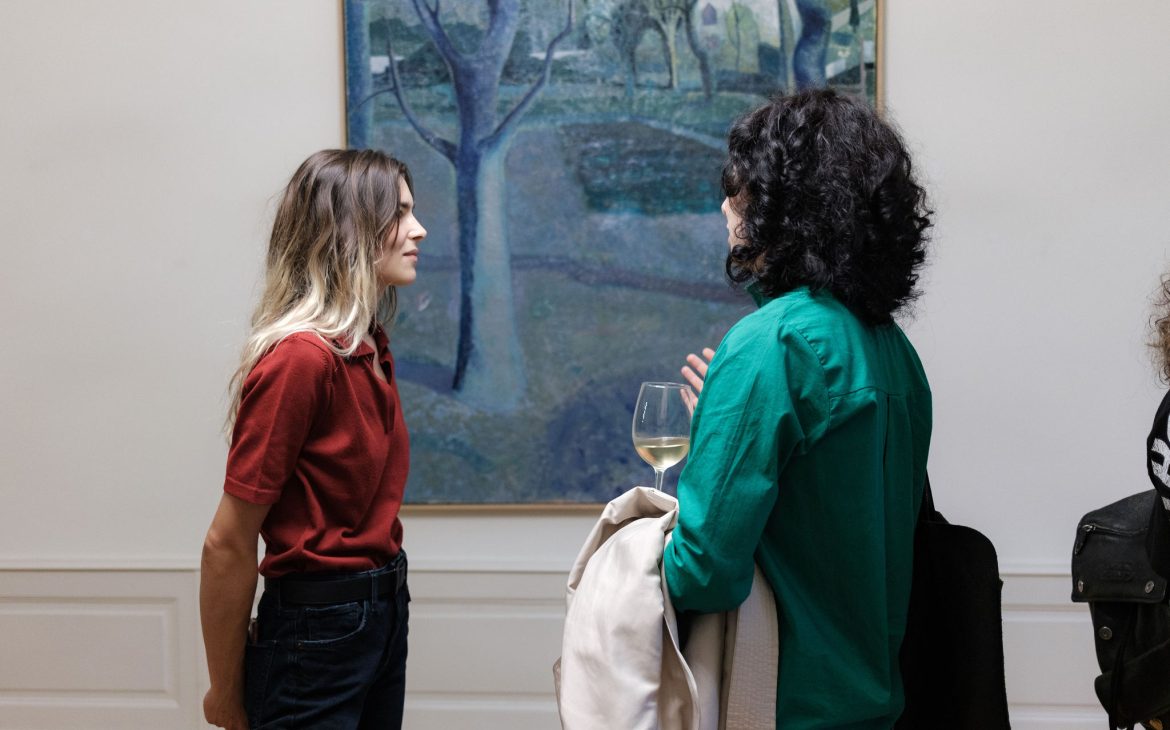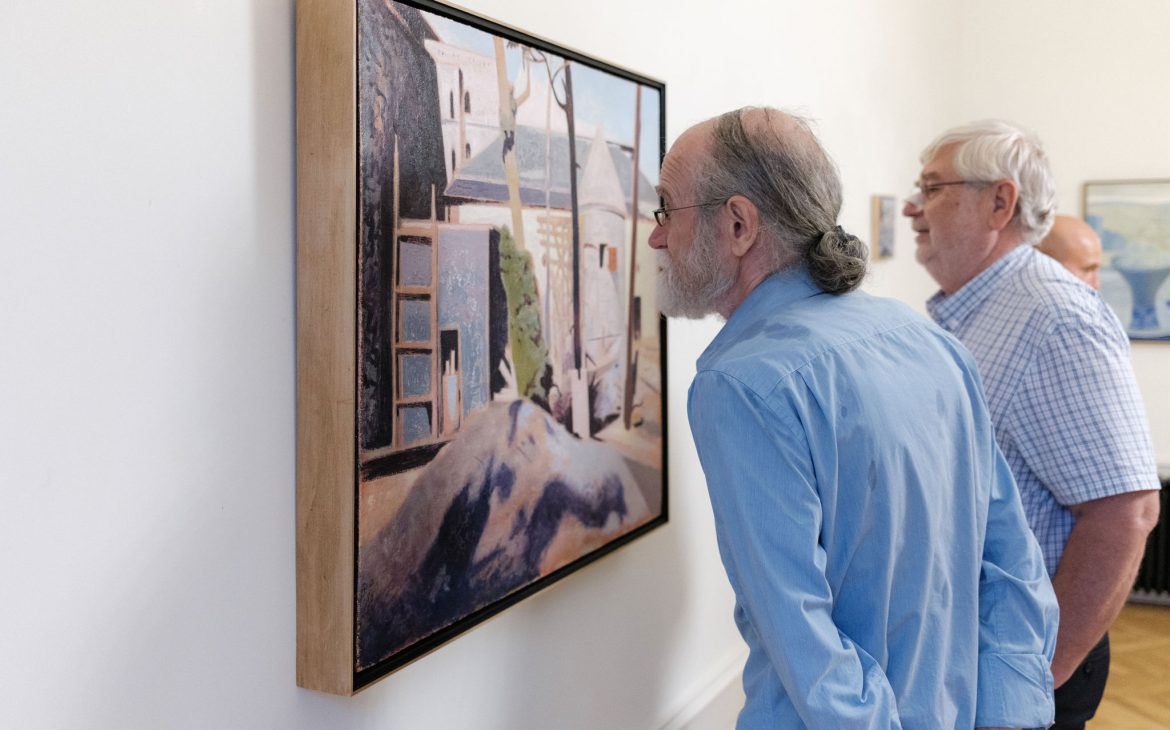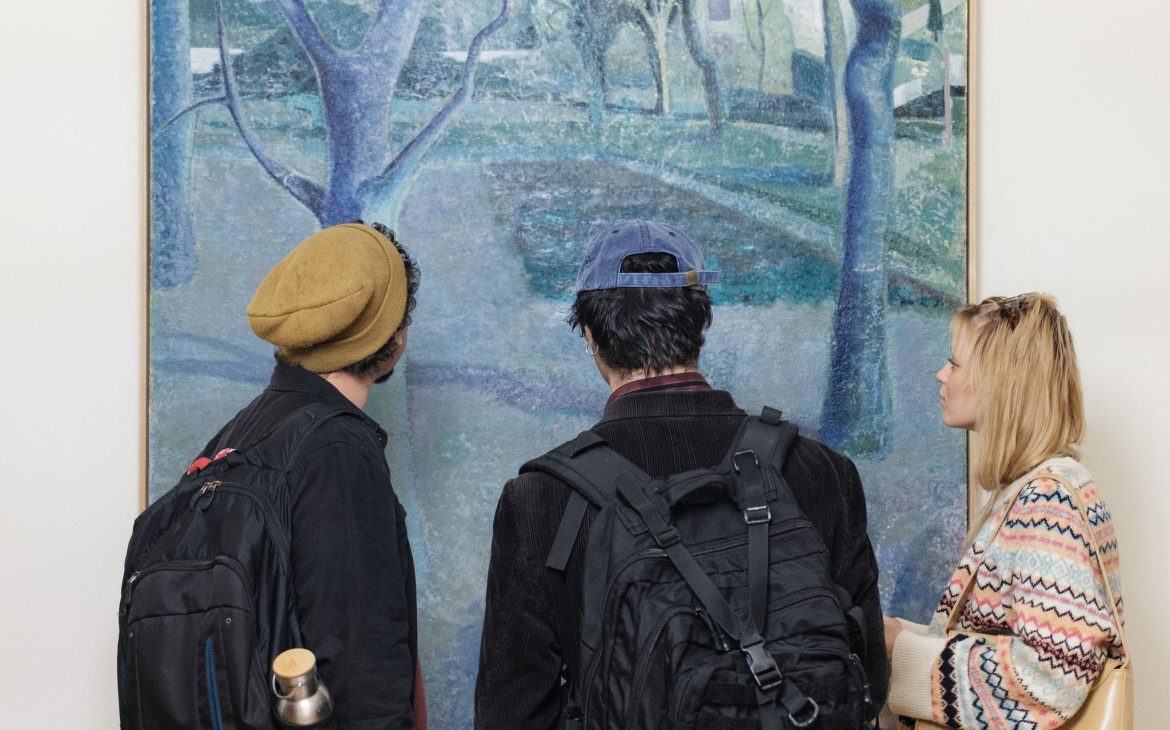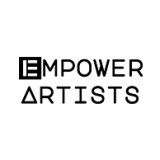The exhibition L U M I N A L, signed by the artist David Farcaș, can be visited at Biju Gallery in Cluj-Napoca until October 15, 2023.
“David Farcaș is undoubtedly one of the artists who has distinguished themselves most in this (new) painting environment during the past five years. After completing an MFA in sculpture, a medium he began working in installations made of old reclaimed wood, and in the context of the specificity as mentioned earlier, he naturally switched up approaching painting, now the dominant medium in his oeuvre. A type of painting with a well-articulated discourse, profoundly personal and aestheticized, having a fresco-like materiality, inspired by such anti-modernist heroes of the 20th century, like Mario Sironi, Giorgio Morandi or Carlo Carrà, the one after Futurism, mainly assuming an exquisite refinement of his compositions, hidden under an apparent simplicity of the subject represented.
David produces few paintings despite his daily, rigorous work routine. That’s because everything happens on the canvas or the wooden support, as may be the case. When the artist chooses the final image from all possible configurations, one or two additional iterations may occur, altering only slightly in detail and atmosphere. This stoic addition of successive layers does not bother him, seeking that physical fresco-like materiality supported by a tonal color scheme.
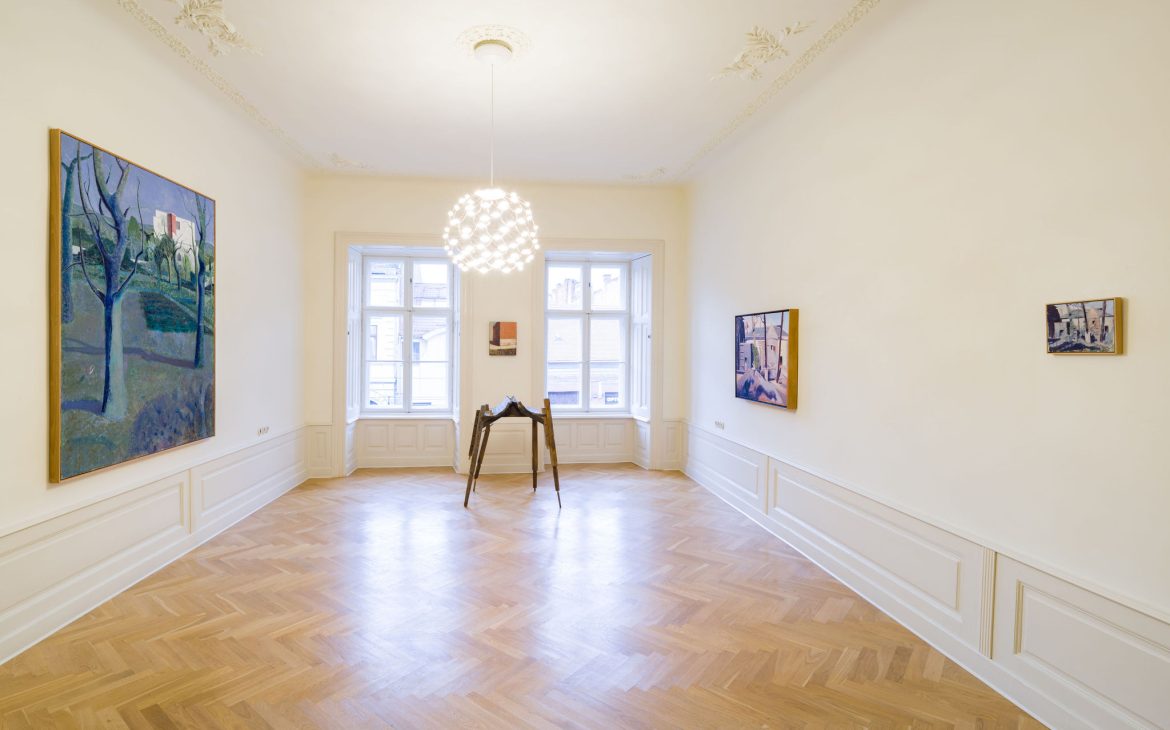
The second prominent aspect that lures us into his works is the light, specific to the Hesychast East or in pintura metafisica. This effect is obtained thanks to the technique by which he arranges the colors, contrary to the Byzantine sankir, to create the illusion of confined light radiating from within the frame and the scene; the artist first applies the light colors, modulating them tonally towards the dark ones.
The light source of the compositions also contributes to this look, solid and unforgivable as a reflector and yellow like a nineties kitchen bulb, coming either from a zenith source canceling the shadows or an oblique one, with accentuated shade, cast directly in the middle of the composition. The atmospheric effects he looks for can be found during the daytime, frequently in the bluish blur of dusk rather than in indirect, burning sunlight. Instead of using techniques like dilution with turpentine to achieve this look, the artist uses the same modulation of colors in repeated layers.
The compositions defy conventions like linear perspective and do not attempt to conceal their surrealist undertones, instead focusing on their most whole, most eerie effect. There is also a lot of Cézanne in David, just that it’s not immediately apparent; it’s more in how he conceals everything in the painting plane by modeling matter and how the image is formed by color spots rather than by compositional lines. This construction method may have also come naturally from his practice in sculpture. As a result, the conventional contradiction between color and drawing is eliminated. A secondary effect is also achieved by this, in that any suggestion of volume is canceled.

The narrative is ambiguous, of a Magic Realism kind. For example, I can’t tell you, maybe either the artist in precise words, why the large canvas with a scythe, which could have been a perfectly rural scene, is an evocative allusion to Baia Mare’s Liberty Square; instead, it should be explained apophatic, as a specific mean to our collective psycho-social space. Often, his landscapes are a mixture of rural and urban, of actual buildings and imagined ones in a schematized fortress-like architecture. They are angular, look like they were carved from a massive block of stone, and are lit from above without shadows. Opaque windows deflect light instead of inviting us in, repelling the gaze and betraying the lack of any interior livable space. Deserted streets are more than often crossroads or dead ends. Claustrophobia is also accentuated by a dense metallic sky that always weighs down on the city and its people.
In one of the works, shades of pale ultramarine in the foreground, of gray-slightly-touched-by-yellow in the background landscape, together with the pale cobalt of eyes, building, and vessel, with the sky depicted in natural umber melted down in burnt one, are as delicate as they are effective in conveying an atmosphere of suspended time, so specific to his paintings. It is a mood and a mode in which pathos and agonistic rhetoric of high contrasts are abolished, where the work requires a long contemplation before unveiling its meaning.
I think many instances in David Farcaș works deal with the fundamental challenge in Western art and image-making: how to represent something that doesn’t exist in the real world? “, Horațiu Lipot, curator.
